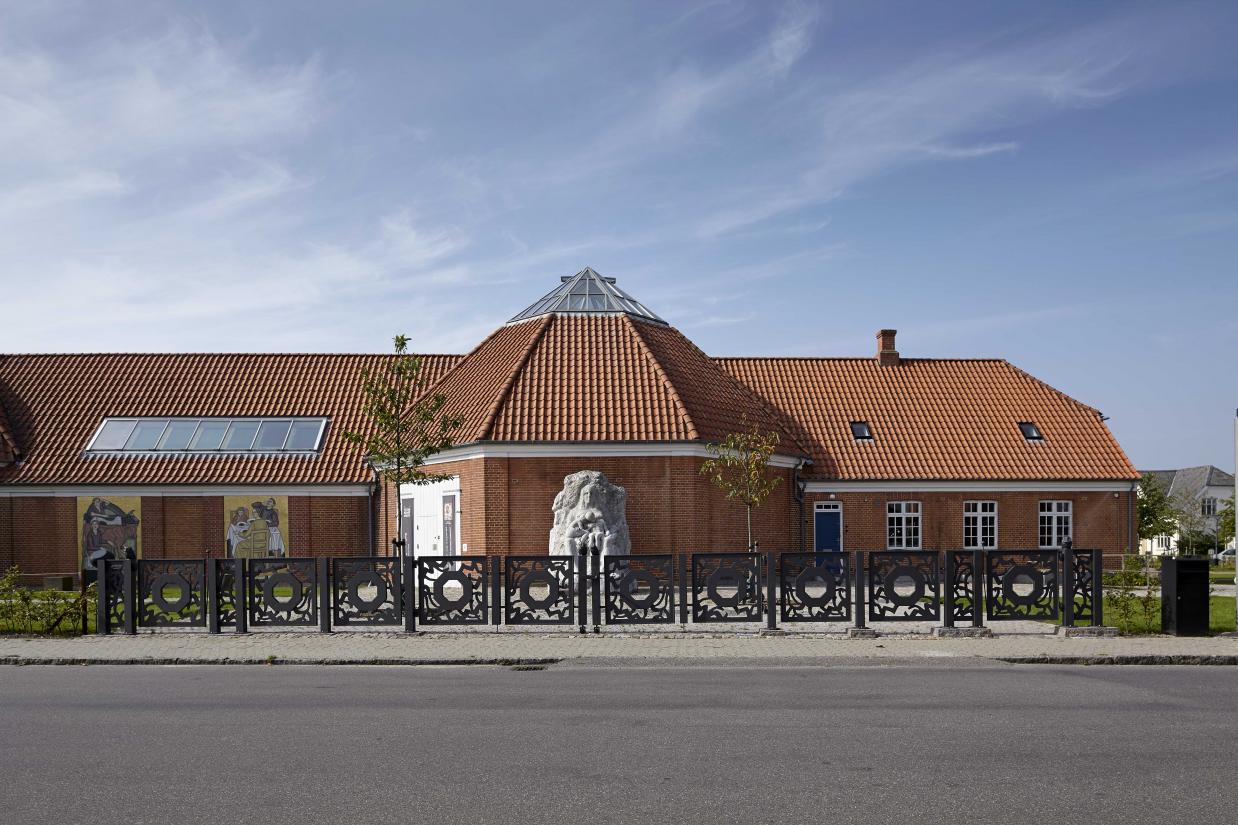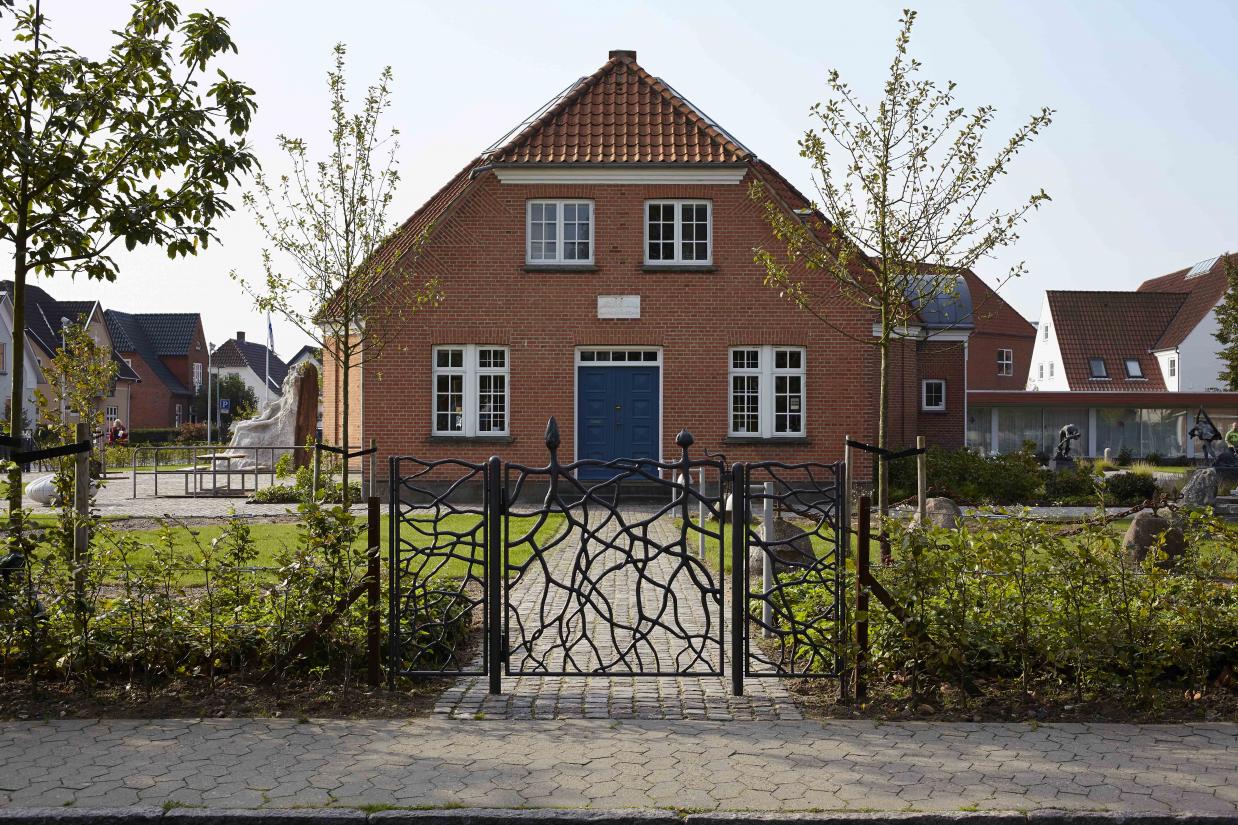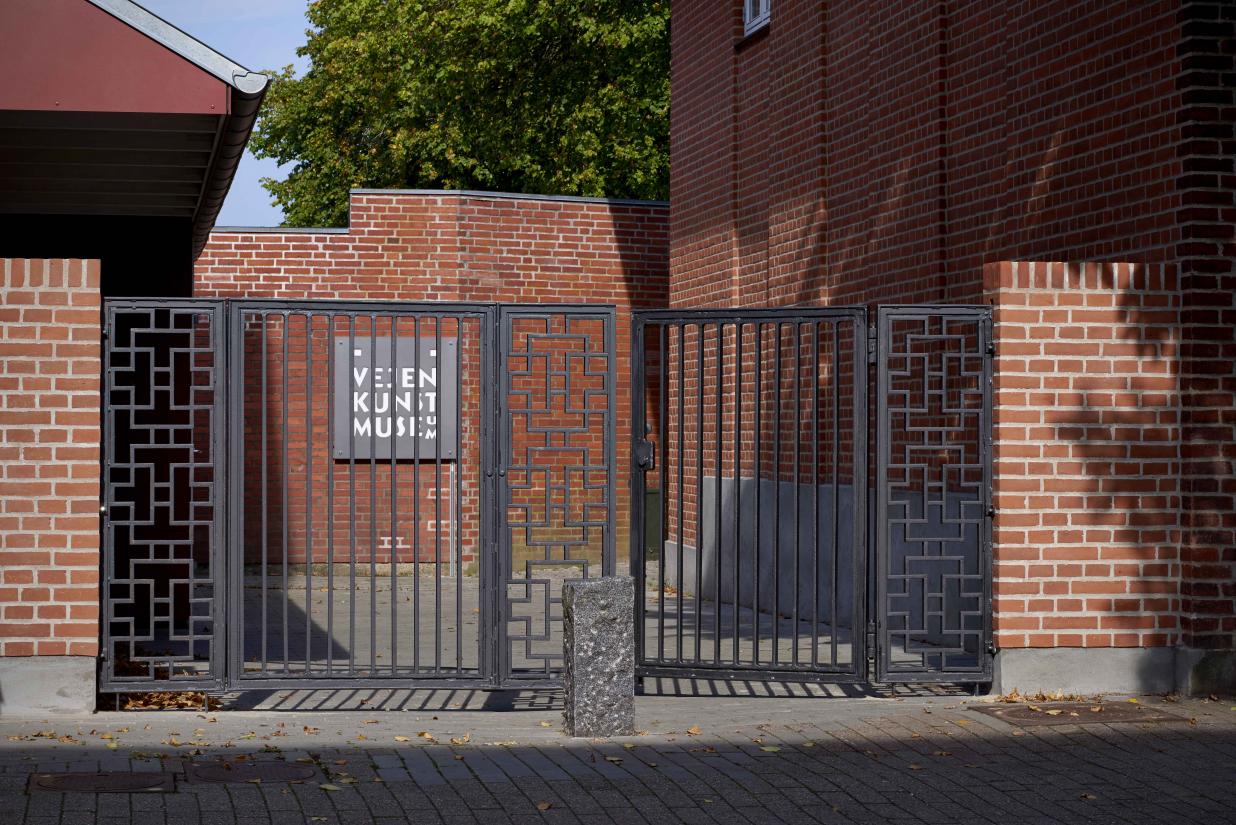On ‘Museumspladsen’ (Museum Square) by Vejen Art Museum, a gate is not just a practical device that marks the boundary between the square and the street. With funding from the New Carlsberg Foundation, four leading Danish artists have created sculptural gates that now serve as the public entrances to the outdoor areas surrounding the museum.
With the desire to improve the outdoor areas of the museum and to establish a common green space in the heart of the city, Vejen Art Museum initiated a complete renovation of Museumspladsen, which was completed in 2014. As part of the renovation, the square was pulled together and set apart from the street by a hedge. Entrances and exits were decorated by the sculptors Erik Heide, Eva Steen Christensen, Marianne Jørgensen and Bjørn Nørgaard, who each created a gate for the renovated space.
The idea for the project came from a series of drawings of lattice gates created by the artist Jens Lund in 1898. His practice was inspired by symbolism and the ‘skønvirke’ (Danish art nouveau) movement around the turn of the century, which was driven by an ambition of fusing the artistic sphere with everyday life. The tangible expression of this ambition was a blurring of the boundary between art, crafts and design. This ambition now has an updated interpretation in the form of the sculptural gates, each offering a unique perspective on how aesthetics and function can go hand in hand.
Four individual gates
Erik Heide’s gate, which was the first to be installed, consists of a 14-metre long cast iron latticework. It is divided into ten sections, each decorated with patterns constructed of centred octagons – a geometric shape that is repeated in the shape of the sculpture hall inside the museum building, which contains the sculptures by Niels Hansen Jacobsen that the museum was originally built to house and present.
In another nod to the past, Eva Steen Christensen’s gate contains reference to Jens Lund’s drawing ‘Samfundets Skov’ (Forest of Society) from the book ‘Livets Skove’ (Forests of Life) (1901), where tree roots serve as a metaphor for the interlaced network of human relationships. The design has a light and organic feel, as the cast iron branches out to form a pattern depicting a network of roots. The handle is integrated into the overall motif: One opens the gate by pushing a gently curved leaf that ‘sprouts’ out at the top.
The third gate, which was created by Bjørn Nørgaard, weighs more than a ton and has no fewer than three titles: ‘Hercules and the Hydra’, ‘Thor’s fight with the Midgard Serpent’ and ‘Saint George and the Dragon’. The symbolism of the titles notwithstanding, the work is abstract in form, expressively decorated in black and gold paint.
The final piece, Marianne Jørgensen’s bronze gate, consists of dream-like motifs where stylized human figures interact with natural elements in the form of the sun, the moon and clouds.
In addition, the museum received a ‘bonus gate’ created by the architect Carl Petersen in 1919, which stood originally by the National Gallery of Denmark. The gate has three ornamented sections, all with Asian inspiration, and is a good match for Vejen Art Museum’s collection, which also features a selection of Carl Petersen’s earthenware ceramics.
![Bjørn Nørgaard: "Herkules og Hydraen" [Hercules and The Hydra], "Thors kamp med Midgårdsormen" [Thor's battle with The Midgaard Serpent", "Sankt Georg og Dragen" [Saint George and The Dragon], 2015. Vejen Art Museum](/sites/default/files/styles/slider_full/public/2018-04/Bj%C3%B8rnN%C3%B8rgaard_resized_1.jpg?itok=LLppo393)






